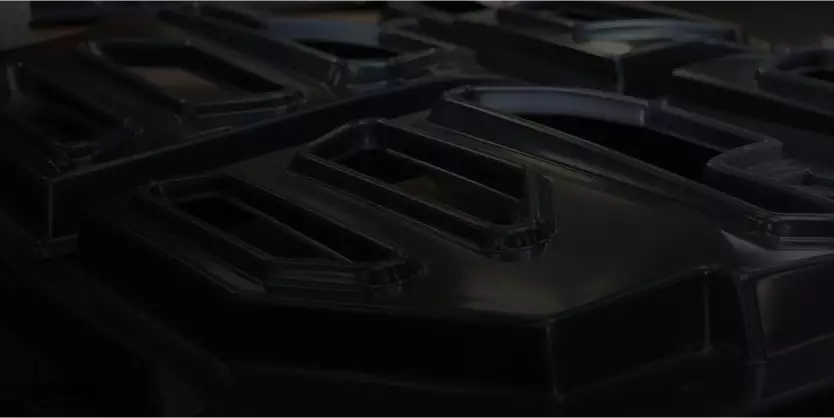01 — DESCRIPTION
VACUUM MOULDING METHOD
To date, AO “SAPT” processes up to 100 tons of sheets per month using this method.
The vacuum moulding method involves positioning a flat blank (sheet or film for thermal moulding) above the matrix, heating up to the moulding temperature and giving the matrix shape by creating a vacuum between the plastic and the matrix, which guarantees high quality and the complete identity of the entire batch of products. The company uses vacuum moulding machines with top, bottom and double heaters. The maximum sheet dimensions for moulding are 2500 x 4500mm. The thickness of the moulded material (sheet) is from 1.2 to 7 mm. The maximum moulding depth is 700 mm.


The use of machining centres when manufacturing parts allows:
1. Machining parts, as well as manufacturing master models in accordance with mathematical models.
2. Minimising the intervention of the machine operator during the manufacturing process. The main functions of the operator are primarily the preparation and final operations: charging and removal of the part, tool setting, and so on.
3. Ensuring production flexibility: processing various parts by changing the programme and the already tested and proven programme can be used at any time and any number of times.
4 Manufacturing parts with high precision and repeatability. The possibility of manufacturing thousands of almost identical parts using the same programme with the required quality. The ability to process parts of complex spatial shape that cannot be manufactured using conventional equipment.
The Plant is equipped with ultrasonic welding machines. The ultrasonic welding technology allows the significant expansion of the capabilities of manufacturing parts, namely, manufacturing prefabricated one-piece plastic products.
Matrices for vacuum moulding are manufactured in the experimental section of AO “SAPT” according to the drawings, mathematical models or prototypes. Based on the surface quality requirements for the moulded product, quantity ordered, the design accuracy and the pricing policy, the matrix can be made of such materials as fibreglass, MDF, plywood, duralumin. Machining centres are used for making master models.
The indisputable benefits of the thermal moulding method include: low cost of the equipment used, the ability to give plastic a wide variety of volumetric and multilevel shapes, the ability to process multilayer and foamed materials, as well as pre-printed materials.
At present, AO “SAPT” issues the widest range of products of plastic sheets by vacuum moulding method: car interior and exterior parts, railway products, medical products, lighting engineering products, advertising products, consumer goods, etc.










